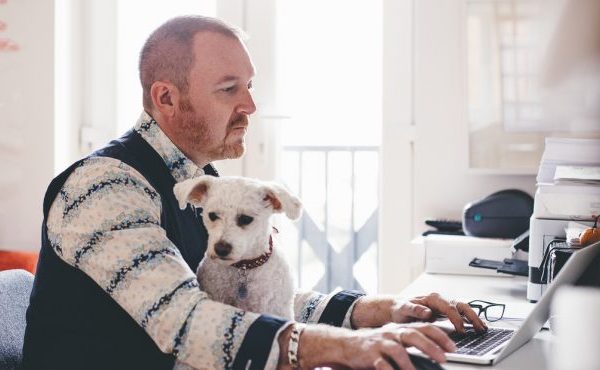The cover letter is a tool to help introduce yourself in a memorable, personal way during a job application.
A well-crafted cover letter goes over information on your resume and expands this information for the reader, taking them on a guided journey of some of your greatest career and life achievements.
When starting to write any cover letter, it is always best to plan the content of your letter based on the requirements of the job you’re applying for.
This guide will cover: the essential elements of a successful cover letter, how to write a unique cover letter, what to include in cover letters, what not to include and how you should submit your cover letter.
What is a Cover Letter?
Your resume is intended to lay out the facts, but your cover letter is meant to convey more personality. The cover letter is your first introduction to the person who may hire you, and its goal should be to make you as memorable as possible, in a good way.
That means writing a unique cover letter for every job you apply to. No templates. No pre-written nonsense. The format of your cover letter should also match the company and the industry you’re applying to.
There is no “official format” for your cover letter or the information you include in it, but your cover letter should be visually organized, and orderly in its presentation of information.
Successful cover letters go something like this:
- Memorable introduction
- Specific, organized examples of relevant work done and problems solved
- Concise conclusion with a call to action
The rest is up to you. As we’ll go over in the next section, “What to Include in Your Cover Letter,” successful cover letters prove that you are qualified for the job by telling stories that demonstrate your skills and experience.

What to Include in Your Cover Letter?
You shouldn’t try to fit your whole career and life into the space of a cover letter.
Your cover letter should be a carefully curated selection of stories from your career that gives the reader a clear idea of who you are and how you can add value to their company.
The Society for Human Resources surveyed organizations on resumes, cover letters, and interviews and found the top three things that must be included in a cover letter are:
- How a candidate’s work experience meets job requirements.
- How a candidate’s skills meet job requirements.
- Why a candidate wants to work at the organization.
Your cover letter needs to provide this information and leave the reader convinced that you are the right person for the job.
To accomplish this, you should be using the requirements of the job to dictate the content of your cover letter and following these best practices.
Show how you can solve specific problems
Saying you’re a ‘problem-solver’ is about as helpful as explaining your preference for chocolate croissants over regular croissants. Don’t tell them about your amazing problem-solving skills. Explain the details of a particular problem you were key in solving and how exactly you employed your skills to solve it. Better yet, if you know the company has a particular problem you could help solve, outline how you can help solve it.
Pick an appropriate voice and tone
You should write like yourself, but you should also pick the appropriate voice and tone for the company you’re applying to.
Researching the company will help dictate the tone you want to use, which may differ greatly, depending on where you apply. For example, the tone of your letter for a legal consulting firm will likely differ from a tech startup.
Tell your story
Telling stories from your career is a great way to demonstrate your skills and give hiring managers some insight into your personality and work style.
When looking for the right stories to tell, always look to the requirements for the position in the job description.
It is also helpful to research the company further online to get a sense for the company’s culture. Before drafting your cover letter, compare your skills with the requirements for the position.
It can be helpful to use Venn diagrams to brainstorm and find what competencies you want to highlight and what specific experiences you want to share. After you create this diagram and identify what falls into both circles, overlapping subjects will direct and inspire the content of your cover letter.
Let’s say you’re applying for a marketing director position. Among other aspects in the description, the job requires several years of marketing experience, a deep knowledge of lead generation, and strong communication skills. Describe how, in your previous role as a marketing manager, you ran several campaigns for your clients and exceeded their expectations of lead generation (with specific numbers, if possible), and how you also trained and mentored new associates on how to manage their own accounts, which improved client retention rates.
Your anecdote is accomplishing a lot at once—it’s demonstrating one of your top hard skills, lead nurturing, and showcasing how you can collaborate with trainees, communicate effectively, and educate new employees on processes and client relations. You’re proving that you can meet the communication standards and marketing knowledge they’re seeking.
Honesty is the only policy
Dishonesty on your cover letter isn’t in your best interest.
Implying or stating that you have a skill that you don’t actually have will come back to bite you upon being asked to use that skill in the interview or on the job.
Don’t sound like everyone else
“Hi, I’m ___. I’m a detail-oriented, multi-tasking, natural-born leader and I am perfect for your company.”
Hiring managers are going to read the same basic cover letter repeatedly, and you don’t want to be the last template email the hiring manager discounts before lunch. Adding a little word variation helps you stand out against other applicants.
Instead of describing yourself as creative, try imaginative. You’re inventive, not innovative. You’re not determined, you’re tenacious. These word variations at least show that you can think beyond what the average applicant is willing to do.
End with a call to action
End your letter with a reason for them to contact you. But don’t add remarks like, “I’ll call to schedule an interview.” This doesn’t make you a go-getter, it crosses a boundary.
Instead, let the call to action be polite and open ended, suggesting that you are excited to offer more information and that you’re looking forward to talking with them.
Proof your cover letter
Always proofread your cover letter for errors and have friends and family read through the cover letter.
How to Make Your Cover Letter Unique?
When thinking about how to make your cover letter unique, keep the following statements in mind:
- You should make your cover letter unique and show the reader who you are as an individual.
- You should include experience and skills that relate directly to the job posting.
These might sound like opposing statements, but they’re equally important for writing a successful cover letter.
Your cover letter needs to be highly related to the job you’re applying to, but the way that you prove your qualifications should show who you are as an individual.
Tell a compelling story
Everyone loves a good story, and recruiters and hiring managers are no exception. Telling compelling stories from your career will make your cover letter unique and memorable for whoever reads it.
Just be sure that the stories you choose demonstrate proficiency with the skills, tools and concepts that are required by the job you’re applying for.
What makes this company your go-to choice? Why is this company special to you? Perhaps you’re attracted to the workplace culture, or perhaps you’ve always admired the business philosophy that the company lives by.
Address the recruiter or hiring manager by name
Now it’s fine to just use “Dear Sir/Madam” or “To Whom It May Concern” when addressing the recruiter. In fact, I can tell you from experience that most people use precisely these words. However, I can also tell you that most people don’t get the job. If you want to make a strong impression, then take the time to find out who you’re addressing.
You may have to make a few phone calls or try several searches before you find the right name, but, the harder they are to find, the less likely other applicants are to do it and the more impressed they will be with you.
Give your cover letter a unique visual format
A unique visual format for your cover letter can help you stand out from other candidates in a positive way. Just be sure that the unique format you use is appropriate for the company you’re applying to and their industry.


